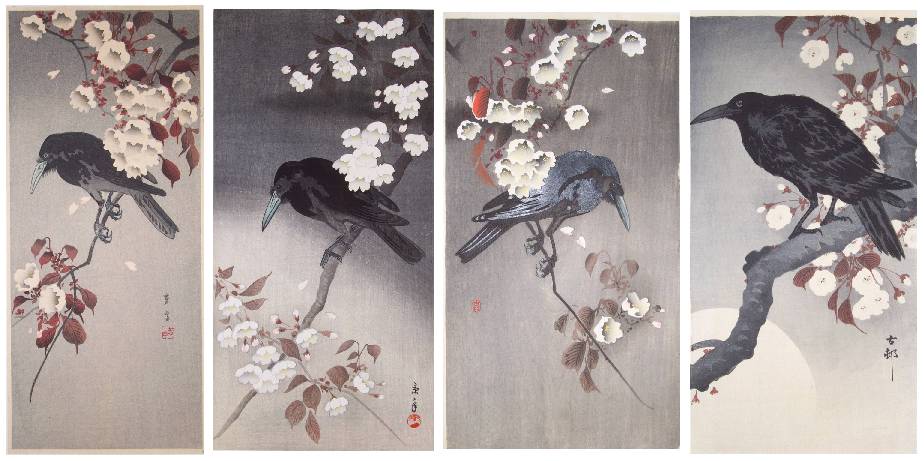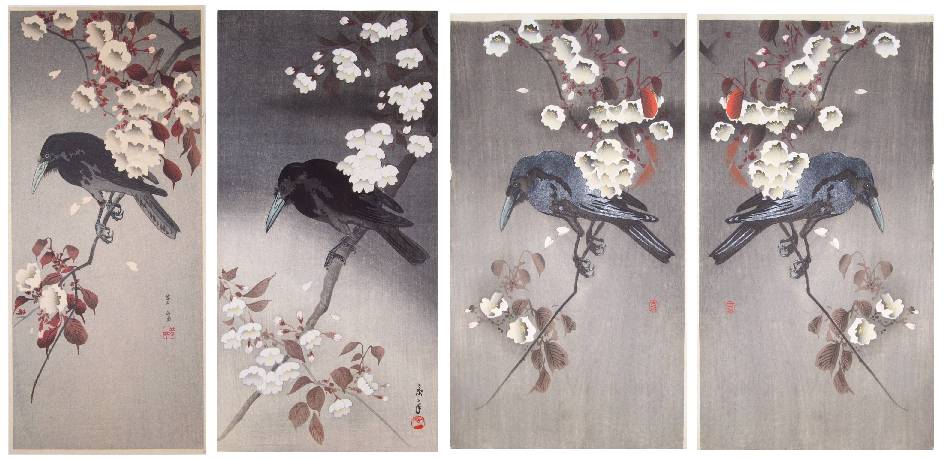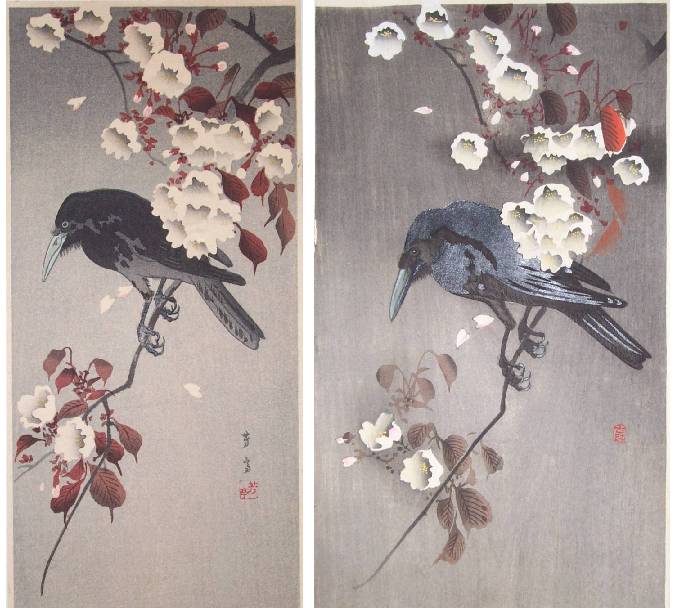
"Crow and Cherry Blossom's" by Hotei Keinen Koson and Koson
Over the years, being a collector of "crow prints" himself, this author has always kept a keen eye turned skyward with interest towards new "crow sightings." As a result, from time to time, new prints are obtained which then allow for further study, comparison, and contemplation. (An additional few examples of "crow prints" can be viewed via an earlier short article titled earlier article titled "Crows -- As Seen in Japanese Prints.")
The large “jungle crow” (Corvus macrorhynchos) is native to Japan, and has been seen it Japanese artwork for hundreds of years, and according to folk belief, was believed to be a messenger from the Gods. Despised today by most Japanese for their garbage-spreading habits, in the past, various Shinto shrines throughout Japan were know for their annual festivals and offerings of symbolic “rice cakes” to these “birds from the Gods.”
Whatever the reason for their artistic popularity, the jungle crow has often and repeatedly appeared as the subject of woodblock prints. Alone, the artist Koson is known to have produced over 30 different “crow designs,” many of which are eagerly sought after by Japanese print collectors. Of course, many other Japanese artists have produced their own “crow designs” as well. This proliferation of “crow prints” by various Japanese woodblock artists does, from time to time, raise questions of “originality of design,” and in some cases, it appears that even outright plagiarism must certainly have occurred. And this possibility is certainly easy to understand when viewed from the “potential profit perspective” of competing Japanese publishers when they must have seen other publisher’s designs selling well. (This subject of the “copying” of popular “Shotei images” by other artists/publishers has been dealt with in a scholarly manner at Marc Kahn’s Shotei.com website under the sub-title " Re-strikes or Plagiarism.")
Often, when viewing “similar-looking” prints, it becomes a matter of “the chicken or the egg syndrome”—that is, trying to best guess the likelihood of “which came first.” In many cases, we’ll likely never know as the precise dating of may early Japanese prints is simply not possible. In any case however, the comparisons and speculation can certainly be fun. One such example is the case of the four “crow prints” seen just below. Which of these four prints do you think are ORIGINAL designs??? Study all four images for a moment—can you tell which are the "chickens" and which are the "eggs"??


